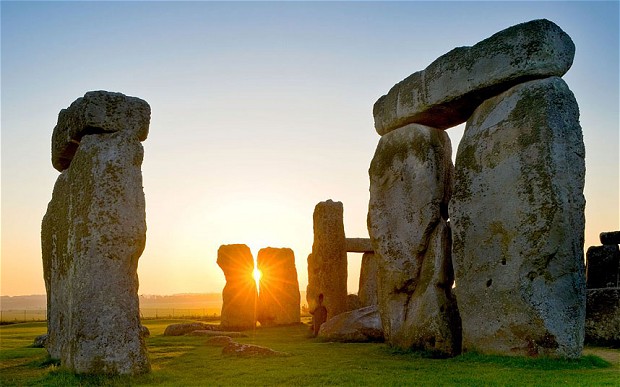
ENGLAND'S RELICS
OF THE OLDEN TIME.
WHEN looking at England's relics of past time, we find many more remains of the Norman than of either the Danish, Saxon, Roman, or Druid periods. This is partly owing to the fact that those earlier works were constructed mostly of perishable material; and those of more enduring substance have been defaced by time or destroyed by ruthless invaders.
As you have been told before, the Druids regarded the oak as sacred, and performed most of their worship under its wide-spreading boughs.
They had, however, their sacred circles, formed of huge stones so placed as to resemble a coiled serpent. Their sacred altar was placed within the inner circle. One of these, still standing on Salisbury plain, consists of one hundred and forty stones, some of them from thirteen to twenty feet in height. One of them is so large that it would require one hundred and forty oxen to draw it.
The Druids had also idols constructed of huge rocks. Of these there are two remaining in Cornwall. One of these, called the Talmen, is one vast oval pebble placed on the point of two natural rocks. It is thirty-three feet in length, eighteen feet six inches wide, and fourteen feet six inches deep. it is ninety-seven feet in circumference.
The other is called the Logan, or Rocking-stone. Its bulk has been computed at ninety-five tons.
These stone deities of the Druids do not touch the ground. They imagined that, every sacred thing, would be polluted by touching the soil.
If we do not see the idol temples of the Romans, we may look at the places where some of them stood. Westminster Abbey was built by Ethelbert, of Kent, on the spot where stood the temple of Appollo. St. Paul's Cathedral, London, was built on the site of an old Roman Temple of Diana.
In different parts of the kingdom there are relics of old Roman walls. Southampton has a long strip of Roman wall still standing, and also three of the ancient gates of the borough. The wall has some outer work and buttresses undoubtedly of Norman construction. These do not, however, cover the ancient wall, but have strengthened it and protected it from the ravages of time.
A few weeks since, I visited the ancient Borough of Grimsby, situated on the Humber River.
It was one of the points where the Danes made their invasion of Britain. One of its streets is still called Dane's Gate. I found but little in the line of relics of Danish occupation, but I learned much of the habits and customs of the people of those by-gone days, when they were just emerging into civilization. One interesting item was with reference to their mode of electing their Mayor. The people would elect three men by vote. They would then blindfold the three men, and place on the back of each a small bundle of hay; then they would place them at different points in the public pound. A young calf was then turned into the pound with the blindfolded men. The first man the calf approached to get a mouthful of hay was declared their Mayor. Of course such usages have long since passed away, as learning and civilization have advanced.
J. N. LOUGHBOROUGH.
Soon Jesus will come and all the devil’s temples and ancient ruins will be forever demolished and Christ will be King through all eternity.